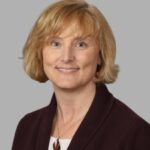
Motor Speech Disorders in Adults and Children
- Prof. Dr. Heather M. Clark, Ph.D. CCC-SLP BC-ANCDS
- 07/01/2023 18:00
- tr, en
- Live Seminars
Please fill the form below and reach DiLGEM specialists to have more information on this seminar and reserve your seat for the next event.
Disruption at the level of motor planning, programming, and execution may negatively impact the speech production to result in abnormal phonatory, resonatory, articulatory, and/or prosodic features of connected speech. In adults, these often occur suddenly from known neurologic injuries but may also develop gradually reflecting onset of a neurodegenerative condition. In children, these disruptions can be hard to discriminate from other developmental speech sound errors. This course will emphasize the knowledge and skills to improve differential diagnosis, treatment planning, and clinical decision making across the continuum of care.
Prof. Dr. Heather M. Clark, Ph.D. CCC-SLP BC-ANCDS
Dr. Heather Clark is chair of the Division of Speech Pathology and Associate Professor in the College of Medicine at the Mayo Clinic in the United States. Her work with childhood apraxia of speech has been strongly influenced by her mentor, Dr. Edy Strand and her colleagues Dr. Ruth Stoeckel and Ms. Becky Baas. In her role as Consultant at Mayo Clinic, she has the opportunity to assess children and adults from across the U.S. and the world, seeking to better understand the relative contribution of language, learning, and motor speech impairments to a patient’s communication impairments. She has published and presented dozens of articles, book chapters, conference abstracts, university and advanced courses on pediatric motor speech disorders. She is an award-winning researcher and teacher, fellow of the American Speech-Language-Hearing Association, and grandmother to Valya, a very sweet bilingual toddler.
Learners will be able to;
- Describe the neuroanatomical support for speech production
- Define and classify motor speech disorders
- Select appropriate assessment procedures to inform differential diagnosis of motor speech disorders
- Recognize the key speech, speech-like, and nonspeech features informing the differential diagnosis of motor speech disorders
- Explain the major tenets of several theoretic frameworks guiding the treatment of motor speech disorders
- Compare and contrast treatment approaches for dysarthria and apraxia of speech
Day 1
- Introduction
- Models of speech production
- Anatomical and Neurophysiologic support for speech
- 1.2.1.Speech subsystems
- 1.2.2.Cranial nerves
- 1.2.3.Central nervous system
- Motor Speech Disorders in Adults
- Dysarthrias
- 2.1.1.Classification systems
- 2.1.2.Subtypes
- 2.1.2.1.Clinical characteristics
- 2.1.2.2.Etiologies
- 2.1.2.3.Speech Features
- 2.1.2.4.Clinical Samples
- Apraxia of Speech
- 2.2.1.Subtypes
- 2.2.1.1.Clinical characteristics
- 2.2.1.2.Etiologies
- 2.2.1.3.Speech Features
- 2.2.1.4.Clinical Samples
- 2.2.1.Subtypes
- Dysarthrias
Day 2
- Assessment of Motor Speech Disorders in Adults
- History
- 3.1.1.Medical history
- 3.1.2.Clinical history
- Observations
- 3.2.1.Speech behaviors
- 3.2.2.Speech-like behaviors
- 3.2.3.Non-speech behaviors
- Differential diagnosis
- Beyond differential diagnosis
- 3.4.1.Intelligibility
- 3.4.2.Participation and quality of life
- 3.4.3.Treatment planning
- 3.4.4.Outcome assessment
- 3.4.5.Assessment in consideration of chronicity
- History
- Treatment of Motor Speech Disorders in Adults
- Frameworks guiding treatment
- 4.1.1.ICF
- 4.1.2.Hierarchical approach
- 4.1.3.Neuromuscular principles
- 4.1.4.Principles of motor learning
- Dysarthria treatments by subsystem
- AOS treatment programs
- Frameworks guiding treatment
Day 3
- Assessment of Speech Sound Disorders Children
- Classification of speech sound disorders
- History
- Describing the sound system
- Motor speech assessment
- Listening practice
- Management of CAS
- Applying principles of motor learning in CAS
- CAS Treatment Programs
- 6.2.1. DTTC
- 6.2.2. ReST/TEMPO
- 6.2.3. PROMPT
- 6.2.4.Kauffman Speech to Language Protocol
- 6.2.5.Nuffield Centre Dyspraxia Programme (NDP)
- Management of childhood dysarthria
- Dysarthria treatment programs
- 7.1.1.Speech Systems Intelligibility Treatment
- 7.1.2. Lee Silverman Voice Treatment LOUD
- Dysarthria treatment programs
- Treating childhood motor speech disorders across severity and in the context of other childhood communication disorders

